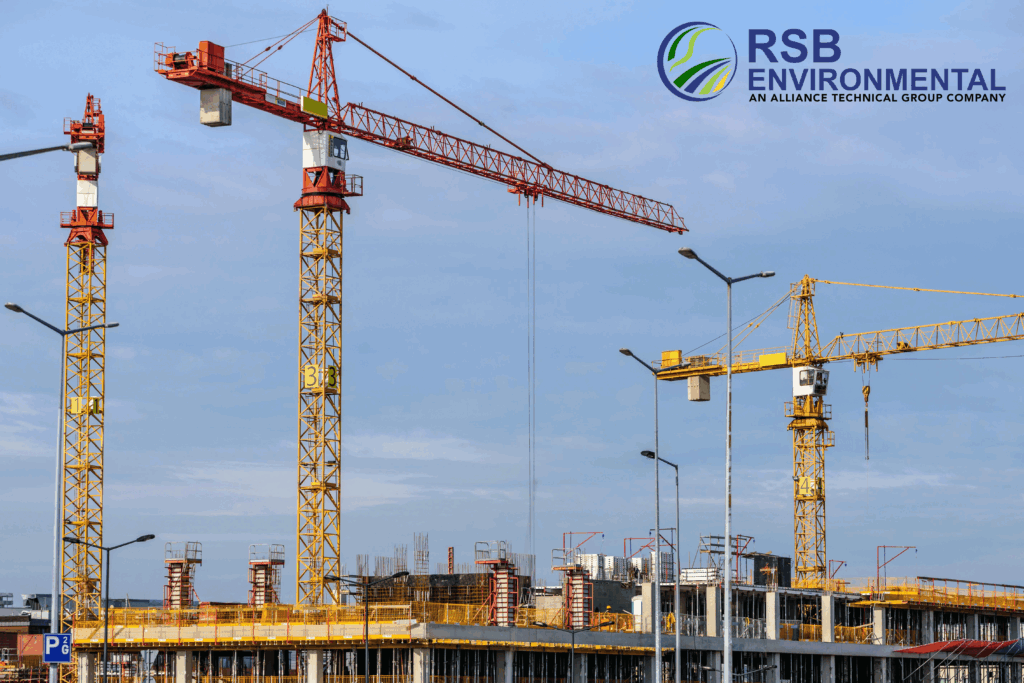Common Environmental Red Flags in Phase 1 ESA Reports for Loan Approvals
When securing financing for a commercial or industrial property, buyers and lenders often require a Phase 1 Environmental Site Assessment (ESA) to evaluate potential environmental risks. This assessment identifies red flags that could impact the property’s value, usability, and, most importantly, loan approval. Understanding these red flags is crucial for real estate investors, property owners, and lenders to make informed decisions and mitigate potential liabilities.
What Are Red Flags in Phase 1 ESA?
Phase 1 ESA reports are designed to uncover past and present environmental risks associated with a property. If these red flags appear, lenders may impose conditions, require additional site assessments, or even deny financing. The most common red flags include:
1. Historical Contamination
Properties with a history of industrial or commercial use may have contamination issues. Former gas stations, dry cleaners, manufacturing plants, or landfills are prime examples of sites that may have hazardous materials lingering in the soil or groundwater. If contamination is suspected, lenders might require a Phase 2 ESA, which includes sampling and testing for further review.
2. Underground Storage Tanks (USTs)
The presence of underground storage tanks (especially those that are abandoned, leaking, or undocumented) is a major environmental concern. Leaking USTs can cause soil and groundwater contamination, posing health risks and requiring expensive remediation. Lenders often demand removal or further site inspections before approving loans.
3. Soil or Groundwater Pollution
Evidence of contaminated soil or groundwater—either from past industrial activities or neighboring properties—can result in significant cleanup costs. If contamination is identified, environmental regulators may require extensive remediation, delaying real estate transactions or increasing financial risk. Compliance with state regulations and environmental guidelines is essential.
4. Proximity to Hazardous Sites
If a property is located near Superfund sites, landfills, or industrial facilities, there is a higher chance of environmental impact. Lenders consider the risk of contamination migration from these nearby areas, which could lower property value or require additional environmental due diligence.
5. Regulatory Non-Compliance or Violations
Properties with a history of environmental violations or regulatory non-compliance may face legal and financial liabilities. Lenders are wary of properties with unresolved compliance issues, as they can delay financing and impact long-term investment viability. Understanding environmental regulations and assessment standards is crucial for all involved parties.
6. Mold and Other Indoor Environmental Concerns
While mold may not always be part of a standard Phase 1 ESA, its presence can signal moisture issues and potential health hazards. Buyers and lenders should be aware of mold risks, especially in older buildings, and consider additional inspections if necessary.
The Importance of Site Assessments and Due Diligence
Lenders rely on Phase 1 ESA findings to assess environmental risks and determine whether to proceed with a loan. If red flags arise, they may:
- Require a Phase 2 ESA for further investigation.
- Adjust loan terms or require escrow funds for remediation.
- Decline financing if risks are too significant.
For investors, following environmental guidelines and standards during due diligence can prevent financing roadblocks and costly liabilities.
FAQ Section
1. What happens if a Phase 1 ESA reveals environmental concerns?
If concerns are identified, lenders may require a Phase 2 ESA, which involves sampling and testing soil and groundwater to confirm contamination levels. Depending on the results, remediation or mitigation may be necessary before financing proceeds.
2. Can I still buy a property if red flags appear in the ESA?
Yes, but additional due diligence is recommended. You may need to negotiate with the seller for remediation, adjust the purchase price, or explore environmental liability insurance options.
3. How long does a Phase 1 ESA take?
Typically, a Phase 1 ESA takes 2 to 4 weeks to complete, depending on property size and complexity. Delays may occur if additional records or regulatory reviews are needed.
4. Do lenders always require a Phase 1 ESA?
Not always. It depends on the property type, location, and loan amount. However, for commercial real estate transactions, lenders often require it to minimize environmental risk exposure.
5. What is the cost of a Phase 1 ESA?
Costs typically range from $2,000 to $5,000, depending on the property’s size, location, and environmental history. While it may seem like an added expense, it helps prevent larger financial risks down the line.
Conclusion and Call to Action Red Flags in Phase 1 ESA
Identifying Phase 1 ESA red flags early in the investment process is essential for securing financing and protecting long-term property value. If you’re considering a commercial or industrial property, ensure you’re fully aware of potential environmental risks before proceeding.
At RSB Environmental, we specialize in Phase 1 ESA reports, site inspections, and environmental due diligence services. Our experts provide valuable insights and information to help buyers, lenders, and property owners navigate complex environmental challenges.
Contact us today at info@rsbenv.com to schedule an assessment and safeguard your investment from unforeseen liabilities.




